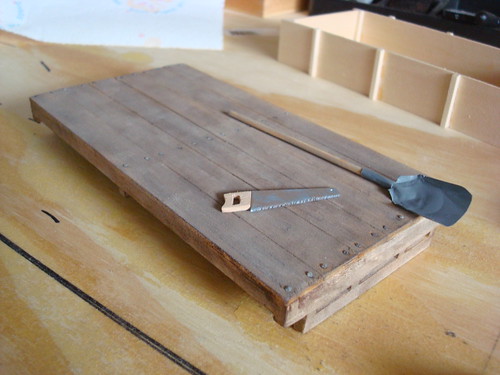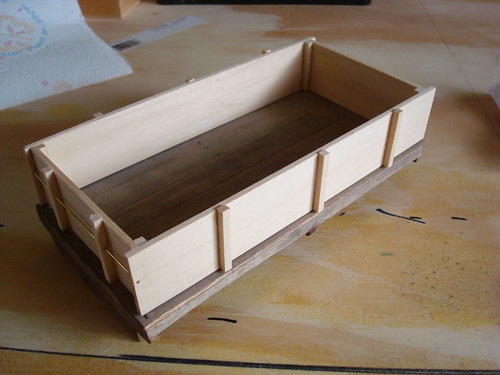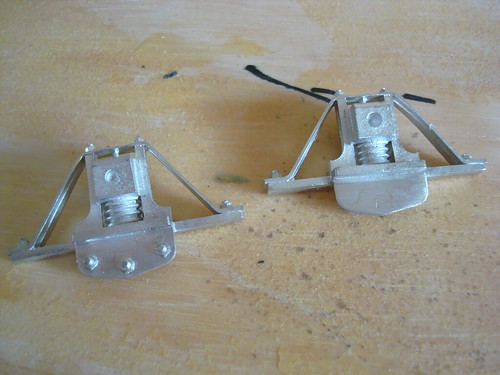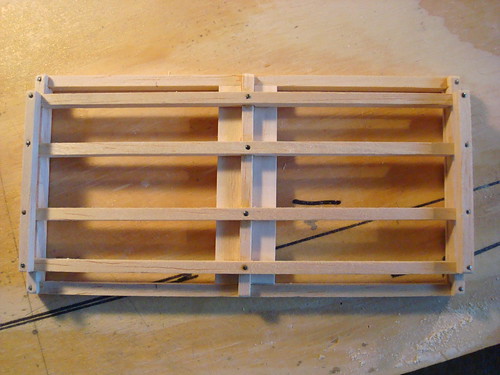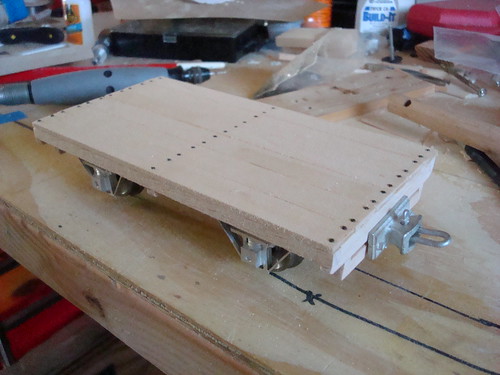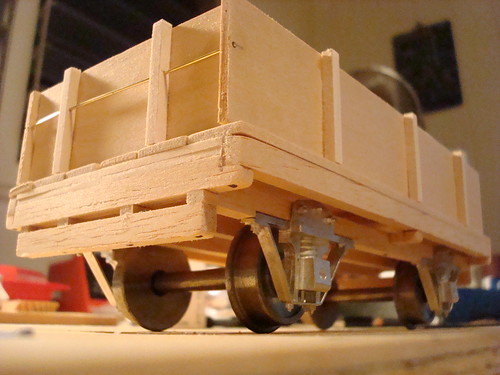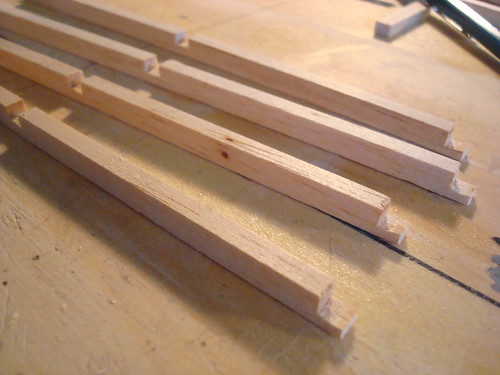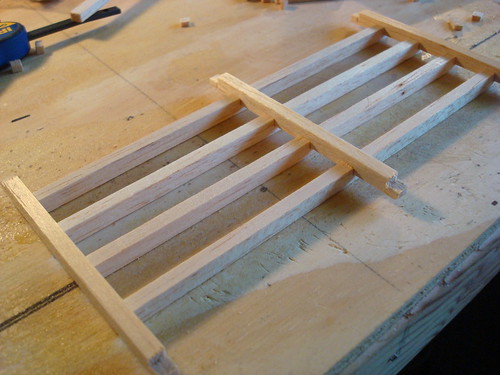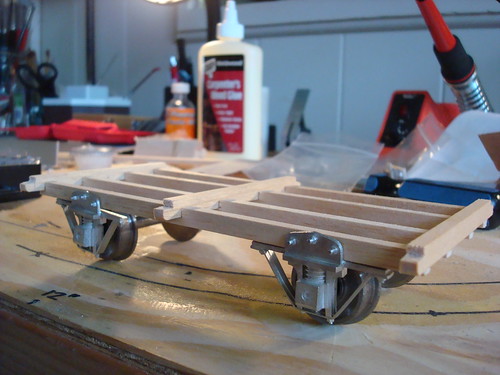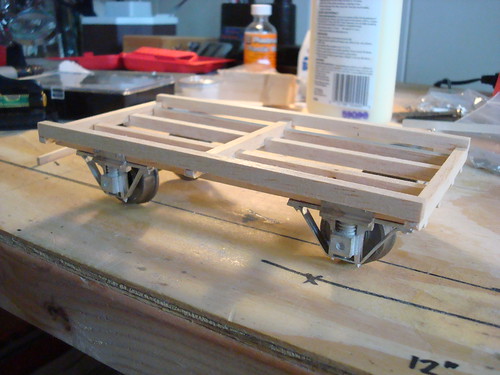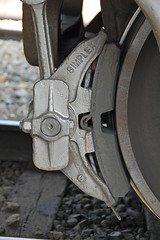Here's my start-to-finish on how I'm making the distressed wood look:
I start by lopping off the rounded edges of the popsicle stick in my NWSL Chopper II (which is quite convenient for smaller strip material)

The end result is a tad over double the width of the gauge, which is right around the width I was going for anyways

I've seen a lot of people recommend using a wirebrush to distress the wood. This method is OK, but for my tastes the effect isn't enough. Instead I prefer to scratch it all myself. In this way I can control how deep the wood grain is, and if it's fresh from the lumber mill or a week away from being decommissioned. Since I'm still stuck in the On30 mindset of "everything modeled should be falling apart" I decided to go with rather deep grooves on my planks.
There are quite a few tools (pictured) that you can use to scratch the wood surface. What I found is that scribe-type tools for me tend to not work well. The gouge they make is fine (as intended) and thus tends to drag the saw dust from the scratch directly into the groove itself, producing a sort of "hairy" scratch line. Instead, I've found an Awl at a local hardware store that's a bit courser and my preferred tool (the one with the brown handle on the far left).

With awl in hand, I basically just start scratching out the wood grain lines. I found it's generally easier to start with lighter lines (less pressure on the awl) first, and then add deeper grooves after. After scraping for a bit, you'll end up with some fairly distinct lines, but other areas will be a bit bare. In the picture below you can see towards the middle right of the plank it's rather bare. After I've given the plank a rough over with the awl, I'll go back and try to find the bare spots like this and fill them in with light scratches.

Next I take some fine grit sand paper and pretty much just soften up all corners. I'm not methodical about this, and just try to go over all the corners at least once.

So the top of the plank should be looking good at this point. Next it's time to deal with the edges. For this I use an xacto knife with a #5 blade in it as seen, and for lack of better description, just randomly stab the end several times over.

Ok, a warning is needed for this next part. This is probably somewhat dangerous and there is probably a safer way to do what I'm going to describe. If you're going to try this yourself, please be cautious.
To get the gaps on the end of the board, I hold the board as seen firmly down against the workbench, and work the #5 blade back towards me into the board, then give it a gentle wiggle to make a small gap.
I've split a few sticks doing this, so gentle is a good word.

Up until now, on the ends, there shouldn't be that much material removed. Here's where the random stabbing comes into place. I take a smaller steel brush, and rub it against the end of the plank.

What I'm looking for is for small bits to be "blown out" by the brushing like this. I pick out the bits with tweezers.

So here we are at the finished plank, ready for painting/staining:

If any of the photos are broken, here's the Flickr set for these pictures:
Flatcar #1 7/8n2





